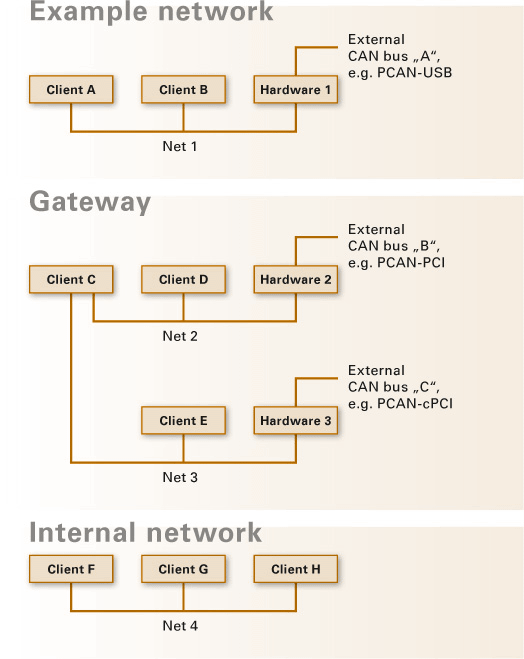PCAN is a synonym for PEAK CAN APPLICATIONS and is a flexible system for planning, developing and using Controller Area Networks (CAN). It is a powerful product for both the developer and the end-user.
The PCAN system consists of a collection of Windows Device Drivers. These allow the Real-time connection of Windows applications to all CAN busses that are physically connected to the PC via a PCAN hardware. The interface to the user and the manager of a CAN-equipped installation are the so-called PCAN clients. With their help process factors are controlled and visualized. The drivers permit the connection of several clients, which are then able to communicate via the CAN busses. Furthermore, several hardware components are supported, which are based on the CAN controller Philips SJA1000.
So-called Nets are available. These specify virtual CAN busses that are extended into the PC. Several clients can connect to a virtual CAN bus. The connection to the outside world (a physical CAN bus) is possible with a hardware interface, e.g. the PCAN-Dongle or the PCAN-ISA card. The following figures give an overview of possible configurations.

Following rules apply to PCAN clients, nets and hardware:
- A PCAN client can be connected to more than one net.
- A net supplies several PCAN clients.
- A hardware component belongs to not more than one Net.
- A Net can have no hardware.
- If a Client sends a message, it will be transferred to every other Client and to the external CAN bus via the hardware.
- If a message is received over the hardware, it is received by every client. Every client receives only those messages, which pass its acceptance filter.
- Definition of the installed hardware and of the nets. Per hardware several nets may be defined. But only one net can be active.
- Clients connect to a net using the net name.
- Every PCAN client has a transmission queue, where CAN messages to be transmitted are waiting until the individual transmission time. At occurrence of the transmission time they are written into the transmission queue of the PCAN hardware.
- Every hardware contains a receive queue for buffering received CAN messages.
|
Copyright © 2017. PEAK-System Technik GmbH. All rights reserved.
|
|
Send feedback to this documentation
|




 See Also
See Also